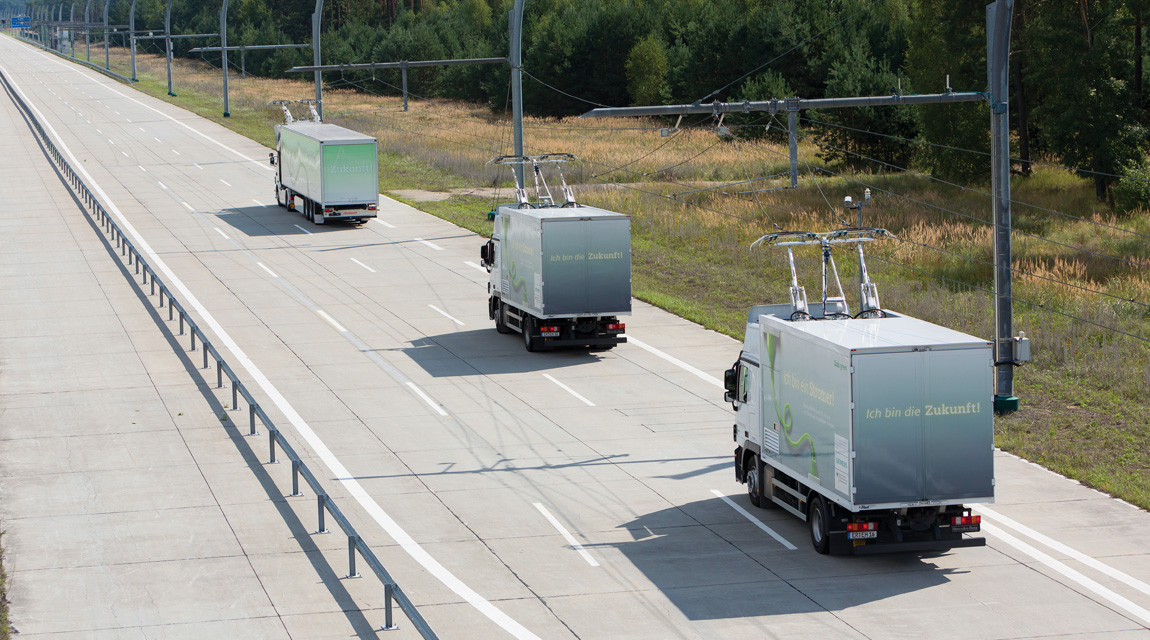eHighways – a real possibility

Electric vehicles (EVs) play an important part in reducing carbon emissions. However, with large, expensive battery packs, companies are scrambling to develop charging alternatives to make EVs more viable. FOCUS takes a look at the situation in Europe.
The electric-truck market is expected to sell 2,2-million units annually by 2025, according to a report by Frost & Sullivan titled: Executive Analysis of Electric Truck Market, Forecast to 2025.
The report states: “The European Union (EU) is expected to switch to hybrid or full-electric technologies in an active drive towards EU’s 20-20-20 target, and to fulfil the Conference of Parties (COP) 21 promises.”
The EU aims to reduce greenhouse-gas emissions by 20 percent, generate 20 percent of its power from renewable energy sources and improve energy efficiency by 20 percent. The trucking industry is a main focal point for many countries, due to its contribution to carbon emissions.
In an opinion piece for Irish news publication Raidió Teilifís Éireann (RTÉ), Eamonn Mulholland notes that truck activity has increased phenomenally. It more than doubled in the United States (US) and Western Europe from 1975 to 2015, while the entire global trucking industry uses up to 20 percent of the annual global oil production. Passenger vehicles, including cars and buses, use 25 percent.
The Frost & Sullivan report notes that part of this expected growth in the EV industry relies on the development of a 250 kW (or more) ultra-fast charging and battery-swapping system, so that the recharging time on an EV is the same as current refuelling processes.
EVs will also have to be able to travel further on a single charge in order to compete with current long-haul vehicles.
As a key innovator in EVs, the EU has made strides in the provision of alternative-charging solutions. Overhead catenary lines and inductive charging are the two systems currently being debated and tested.

Overhead catenary-lines
This tram-like system equips EVs with retractable contact lines (or pantographs) that produce power as the vehicle travels underneath the overhead power lines.
In an article for Trucks.com, Sarah Holder notes: “This solves the downtime problem for electric trucks that stop for long periods to charge or swap batteries. However, such systems still require considerable investment in overhead wiring.”
In August, 2017, German automation company Siemens was commissioned by the German government to build a ten-kilometre eHighway that uses the overhead catenary-line system along a stretch of the A5 federal autobahn.
According to a statement by Siemens in Global Construction Review, a 40-t truck running for 100 000 km on this eHighway would save €20 000 (R291 912) in fuel costs.
This is not the first system of its kind. Siemens first introduced the system along a two-kilometre stretch of road in Sweden in 2016. Last year, the company introduced the system in the United States (US). Tests are set to start in Germany this year.
Implementing this system costs €3 million (R43 million) per kilometre of road. A prettier, but even more expensive, alternative is the inductive-charging system.
Inductive-charging
Mulholland explains that in an inductive-charging system, electromagnetic generating coils are fitted to roads, while electromagnetic receiving coils are placed on the EV, which allows power to wirelessly charge the vehicle as it travels.
In May 2017, Qualcomm Technologies demonstrated this charging system on its 100-m test track in France. This dynamic electric-vehicle charging (DEVC) technology can send up to 20 kW of inductive charging power to an EV and will enable EVs to use smaller batteries.
The system has not yet been tested for trucks. However, it is safe to assume that current technology lacks the necessary power to charge an electric truck. The E-Force 18-t truck, by Swedish company E-Force One, for example, uses about 110 kW/h for a 100-km highway trip, and about 90 kW/h to travel 100 km in urban areas.
The MAN eTruck, used for medium and heavy inner-city distribution, has a 250-kW electric motor, which can travel up to 200 km on a single charge. These vehicles will require more than 20 kW.

Inductive charging also presents policy challenges. Countries will have to consider methods of billing for users of this power. Short trips will have minimal benefits. Inductive charging will, therefore, have to coexist with traditional plug-in charging stations.
Implementing this system will also require existing roads to be torn up, which will add expensive building and maintenance costs, while causing disruptions.
Whether countries decide to invest in the overhead catenary lines, or the inductive charging systems, it is going to be expensive. However, with an increase in extreme weather conditions caused by increased global warming, countries might not have alternative choices.
The Hindu Business Line reports that, even if the COP21 Agreement is met, there is still a likelihood of extreme weather in the future. Under the Agreement, several countries have committed to reducing greenhouse-gas emissions to ensure that the global temperature does not rise more than two degrees Celsius.
The publication notes: “Researchers found that emissions consistent with the commitments countries have made, are likely to result in a more than fivefold increase in probability of record-breaking warm nights of over approximately 50 percent of Europe.”
Many countries have aimed at keeping the global temperature rise to no more than 1,5 degrees. If this is the case, the probability of extreme weather events will be reduced. The sooner countries can go electric, the better.
With big investments in electric alternatives and a commitment by the EU to reduce carbon emissions, eHighways may become a possibility sooner than was previous thought possible.
Published by
Focus on Transport
focusmagsa




